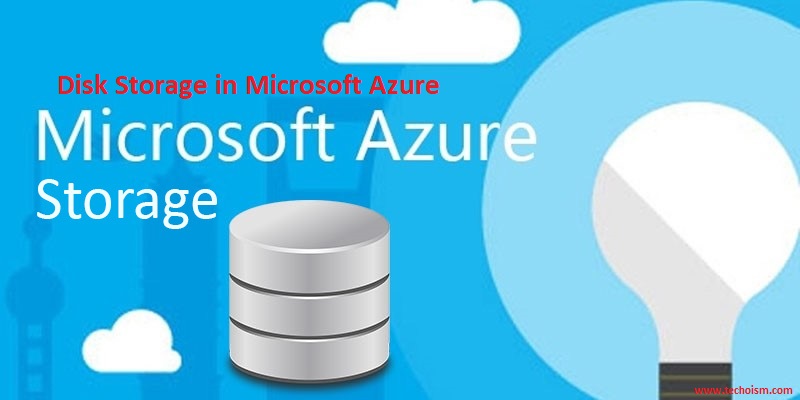Disk Storage in Microsoft Azure
A storage account is a container that bands a set of Azure Storage services together. Microsoft Azure Storage system is a cloud storage technology designed for data storage. The virtual machine uses a disk place to store an operating system, applications, and data files in Azure. Azure Disk Storage is the only shared cloud block storage that supports both Windows and Linux-based clustered or high-availability applications via Azure shared disks.
Useful Articles:
- HOW TO TAKE AZURE VIRTUAL MACHINE SNAPSHOTS FOR DISKS
- AZURE VIRTUAL MACHINE SCALE SET & AUTO SCALING
- CREATE NEW VIRTUAL MACHINE USING EXISTING SNAPSHOT
- STEPS TO CREATE AZURE CUSTOM VM IMAGE
- HOW TO CREATE AZURE VIRTUAL MACHINE USING AZURE PORTAL
- STEPS TO CREATE AZURE VIRTUAL MACHINE SCALE SET
There are two types of Disks in Azure.
- Unmanaged Disk
- Managed Disk
Unmanaged Disks:
VMs has used this type of disk. You may only get unmanaged storage in HDD. With the unmanaged HDD, you need to create a storage account and need to specify the storage account while creating the disk. With these disks, we can create our storage account and specify that storage account when we create the disk. In Unmanaged Disk storage, you must create a storage account in resources to hold the disks (VHD files) for your Virtual Machines.
Managed Disks:
It handles the storage account creation/management in the background for us and ensures that we do not have to worry about the scalability limits of the storage account. We specify the disk size and the performance tier (standard/premium), and Azure creates and manages the disk for us.
Difference Between Managed Disks and Unmanaged Disks:
| Features | Managed Disks | Unmanaged Disks |
| Management | Is an ARM (Azure Resource Manager) object (resource) | Is not an ARM resource, but a file (.vhd) that stores an Azure Storage Account. The latter is an ARM object |
| Size | The managed disk sizes are fixed and can be resized. | You can choose the disk size during the provisioning and can be resized. |
| Encryption | ADE, SSE (Coming soon) | ADE, SSE |
| Performance | A managed disk has predictable performance. | Only premium storage disks have predictable performance. |
| Availability | When placing Azure Virtual Machines using managed disks under an Availability Set, disks are placed on different fault domains in order to achieve a better SLA. | When placing Azure Virtual Machines using unmanaged disks under an Availability Set, there is no guarantee that the disks are placed on different fault domains, even if they are on different Storage Accounts. |
| Redundancy | LRS | LRS, GRS |
Different Types of Disk:
Azure has different types of storage options:
- Standard HDD
- Standard SSD
- Premium SSD
- Ultra Disk
Standard HDD:
- It’s a low-cost disk and is suitable for backups.
- Write latencies of a disk is under 10ms and Read latencies are under 20ms.
- Standard HDD is the cheapest solution.
- Storage Price of Standard HDD is $0.048125 / GB per month
Standard SSD:
- Higher reliability, scalability, and lower latency over HDD.
- Microsoft provides 99% capacity and performance thresholds but is not guaranteed.
- It is a cost-effective storage option optimized for workloads.
- The storage Price of a Standard SSD is $0.075 / GB per month
Premium SSD:
- It is designed for performance-sensitive and for production environments.
- It offers high-performance, low-latency disks for VMs.
- Consistent IOPS, and throughput.
- Storage Price of Premium SSD is $0.15 / GB per month
Ultra Disk:
- Ultra-Disk provides high throughput, high IOPs and low latency disk storage.
- Only supports un-cached reads and un-cached writes
- Doesn’t support disk snapshots, VM images, availability sets, Azure Dedicated Hosts, or Azure disk encryption.
- Storage Price of Ultra disk is $0.12 / GB per month
Storage Tiers in Azure:
There are three types of storage tiers:
Hot Access Tier: Augmented for storing frequently accessed data.
Cool Access Tier: Cool Access Tier is the one where infrequently accessed data resides and is stored for at least 30 days.
Archive Access Tier: Archive Access Tier is used for storing data that is rarely accessed and stored for at least 180 days with flexible latency requirements.
Data Storage Type:
- There are different types of data storage.
- Blob
- File Shares
- Queues
- Tables
Blob: Blobs typically include large unstructured files, such as images, videos, backup files etc. Blob storage can be divided into two access tiers, a hot access tier and a cold access tier. It is a massively scalable object store for text and binary data.
Files Shares: Azure Files provides highly scalable cloud file shares that can be accessed via industry-standard protocols. Cloud and on-premises deployments can both mount Azure file shares at the same time.
Queues: Azure Queue Storage is a large-scale message storage service. The number of queues is only limited by the capacity of the storage account.
Tables: Table storage is used to store semi-structured data in a key-value format in a NoSQL datastore.
Enjoy it!

